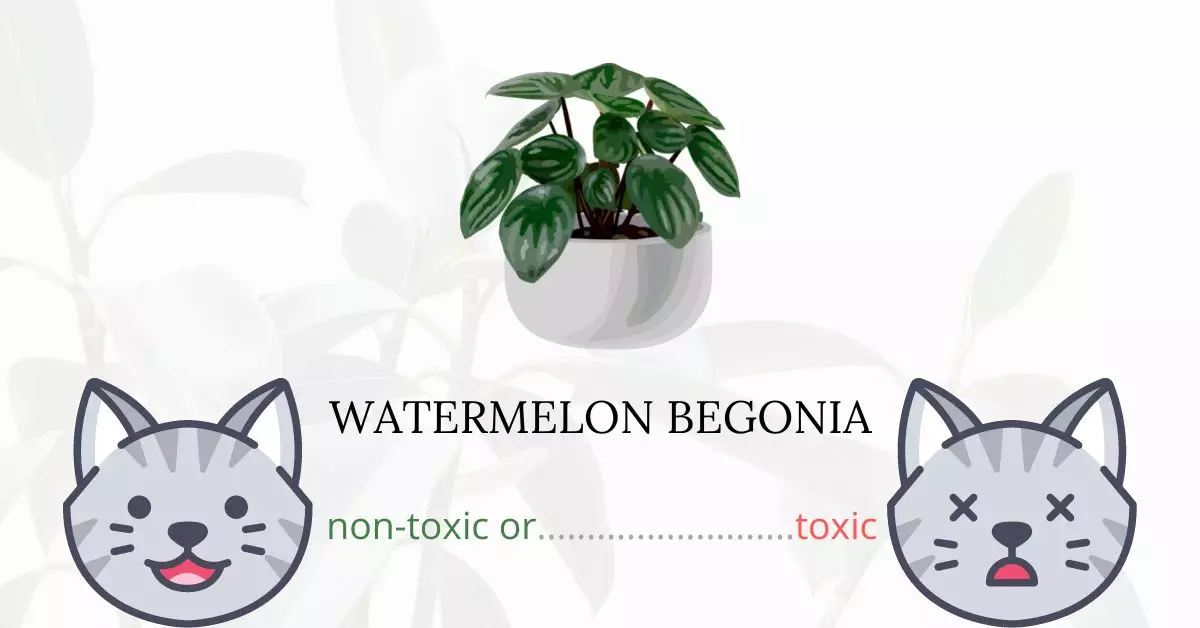Watermelon Begonia, also known as Watermelon Peperomia, is not toxic to cats. In fact, it can be found on the ASPCA’s list of non-toxic plants, as well as being recognized as safe by PetMD. It’s important to note, however, that while it poses no inherent threat, it doesn’t mean you should allow your feline friends to nibble on this ornamental plant freely at home.
This article was written in collaboration with a team of experienced DVMs (Doctors of Veterinary Medicine). Through their expert insights and our thorough research from high-authority sources such as ASPCA and PetMD, we aim to provide you with accurate and up-to-date information about the potential risks associated with various plants and their effects on cats.
Can Cats Eat Watermelon Begonia or Watermelon Peperomia?
You should not permit your cat to regularly nibble on your watermelon peperomias or any houseplants. While it may not harm them because the plant does not have harmful substances, eating large portions of the plant may cause cats to have indigestion. This is because their bodies cannot fully metabolize plant matter.
If your cat is experiencing indigestion, the most common symptoms that he may show are vomiting and diarrhea. These symptoms will gradually disappear as his body eliminates the plant matter so you can ease your worry.
Another thing that you should note as a fur and plant parent is plant care products used on plants can affect your fur babies. Be careful in using fertilizers, pesticides, and other products as some may contain toxic chemicals.
What is Watermelon Begonia or Watermelon Peperomia?
Scientifically known as Peperomia argyreia, the watermelon begonia is a flowering plant in the Piperaceae family native to northern South America. It is particularly common in Bolivia, Brazil, Ecuador, and Venezuela. Watermelons and begonias are not related to this plant. These terms refer to the leaves shape, markings, and texture.
Watermelon begonia is a perennial with asymmetrical oval green leaves that are slightly fleshy, strikingly marked with curved silver stripes, and red stems that grow to 20 cm (7.9 in) tall and broad. In summer, tiny green flower spikes emerge on this plant.
Watermelon begonias are typically small and look best when planted in groups of plants with similar cultural requirements. The ornament, watermelon-striped, waxy leaves, and cream-colored, spiked inflorescence of this plant adds interest. This plant can be used as a desktop plant. It can live in low light for months without becoming stressed.
Keeping Cats Away From Watermelon Begonia or Watermelon Peperomia
If you make your houseplants taste bad, your cat might stop chewing on them. Bitter spray should be applied sparingly to your plants before letting them air dry. Before your cats decide they no longer want to nibble on your plants, this method might need to be tried a few times.
Aluminum foil can be another effective way to stop your cat from picking on your plants. Because cats typically don’t like the way aluminum foil feels, tastes, or smells, they tend to avoid it. Try wrapping your plant pots in foil or covering the soil with crumpled foil.
Plants to Avoid For Your Cats
If you are a cat owner and unsure if the plants growing in your yard are harmful to your cats, check out this list of toxic plants for cats. You can also check our list of non-toxic plants for cats.





